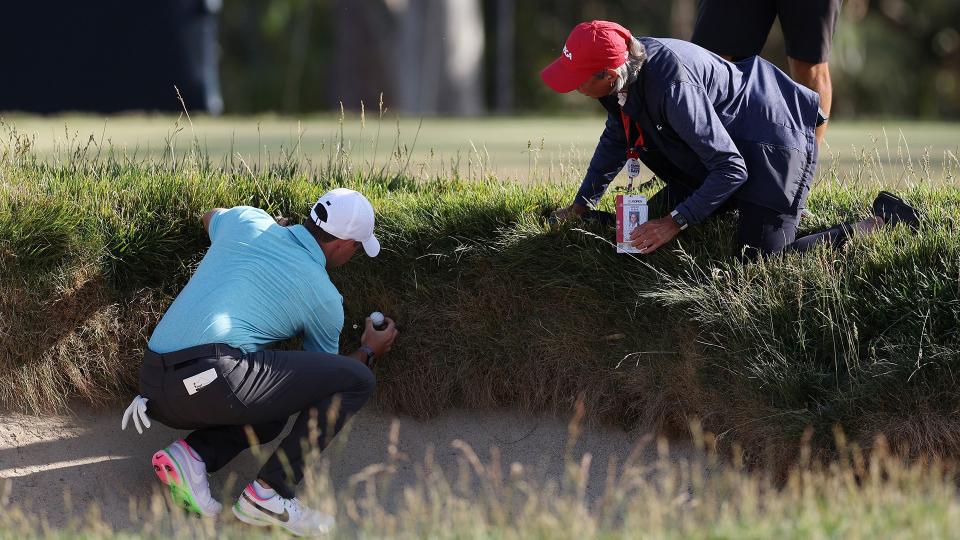The hole where Wyndham Clark won the U.S. Open, and Rory McIlroy lost it

LOS ANGELES – In his mind, Rory McIlroy didn’t concede the 123rd U.S. Open to Wyndham Clark until the eventual winner executed a perfect lag putt in the fading sunlight of the tournament’s final stage, but the turning point of this weekend’s novel came four holes prior.
Standing on the 14th tee box, McIlroy trailed Clark by just one shot. When their respective groups finished the 612-yard par 5 that actually played slightly over par Sunday, the eventual winner led by three.
Full-field scores from U.S. Open
It was a two-stroke swing that proved just enough to get Clark over the finish line for the first major victory of his career.
McIlroy got the first crack at Los Angeles Country Club’s longest hole during the final round, but he immediately put himself in a precarious situation with a missed fairway into the left rough. He had to lay up, giving himself 125 yards to the hole.
“Full sand wedge wasn't getting there, so I said to Harry, three-quarter gap wedge would be perfect,” McIlroy said. “I feel like I didn't time the shot perfectly. I hit it when the wind was at its strongest and the ball just got hit a lot by the wind, and obviously it came up short.”
A brief search ensued, and Scottie Scheffler eventually found McIlroy’s ball plugged in the face of the front greenside bunker. A rules official deemed it embedded, awarding the Northern Irishman a free drop outside the bunker.
It was a massive break, but McIlroy couldn’t capitalize.
His next shot rolled 10 feet past the hole, and he couldn’t save par. A tap-in bogey put him two strokes behind.
Meanwhile, Clark was preparing for what he called the shot of the tournament. That might be underselling it.
It might’ve been the shot of his life.
After finding the fairway with a 327-yard drive down the left, Clark pulled 3-wood from his bag and hit the purest of fades straight at a gap at the front of the green. Off the club, Clark’s shot looked like it might not stop till it reached Century City in the background, but it took three bounces before trundling onto the green and settling 21 feet from the pin.
Two putts later there was a birdie on the scorecard, and a shift in mindset for Clark as he headed down the stretch.
“All I've got to do is coast in,” Clark said.
U.S. Open payout: What Wyndham Clark and Co. made at LACC
Of course, ‘coast’ might not be the right adjective for Clark’s finish. He recorded back-to-back bogeys after his sensational birdie, but he gave himself enough room to manage some squirrely shots down the stretch. At one of the most electric places on the course, where No. 14 green and No. 15 tee meet, Clark produced a moment of brilliance that will define the final round of his signature win.
Golf Channel analyst Brandel Chamblee not only compared Clark's second shot into No. 14 to Ben Hogan's 1-iron approach into the green at Merion's 18th in the final round of 1950 U.S. Open; he said Clark's surpassed it.
"The most famous photograph in the history of golf is Hogan hitting a 1-iron just onto the green, 40 feet away. This shot was harder and better," Chamblee said on "Live From the U.S. Open" Sunday night.
On the flip side of the coin, the sting will surely last for McIlroy, who said his putt on No. 8 and the shot into the green at No. 14 were his two biggest mistakes of the final round. The 14th represented his only bogey on a par 5 all weekend, and his only bogey of the final round.
When a major championship is on the line, all it takes is one slip, or one masterpiece in the case of Clark, to provide all the difference.

